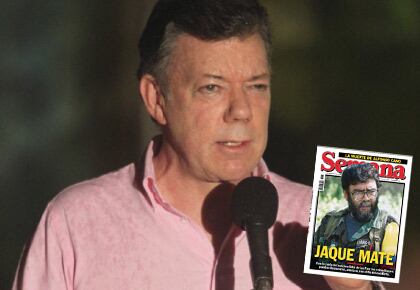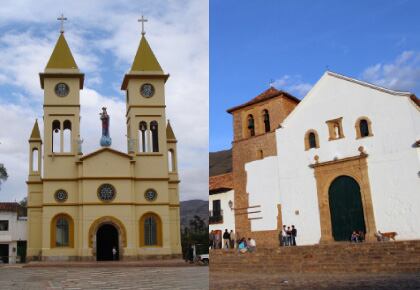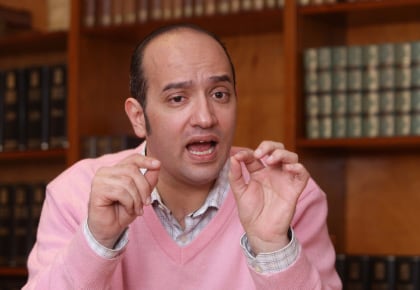Various attempts to reach Venezuela’s government officials were made by Colombian diplomats in the past month. Important information had to be transmitted. The issue was sensitive: it dealt with a report about Venezuelan rocket launchers found in a FARC camp and presumed to be property of that illegal group. Although it was not the first time Colombia’s army encountered Venezuelan equipment in these camps—mostly ammunition and firearms—it was worrying to see such far-reaching, destructive and dangerous artillery in the hands of insurgents.
When the Venezuelan officials were notified, they stated that an investigation would be started to understand how weaponry reserved for the Venezuelan army had ended up in the wrong hands. Two months later, nothing had happened. Colombian officials decided to keep quiet following President Uribe’s instructions; even more so as Colombia’s relationship with Venezuela deteriorated.
SEMANA followed the story, one with deep international repercussions.
It all began last year, during an army raid against Gener Garcia alias ‘John 40’. He is an important FARC chief who controls over 300 insurgent soldiers, is known for his close relationship to Jorge Briceño alias ‘Mono Jojoy’ (one of FARC's highest-ranking members) and is said to control large part of the drug dealing business in Colombia.
In the raid, which occurred in July 2008, the army soldiers were astonished with their findings. Even though ‘John 40’ managed to escape, they found various AT-4 rocket launchers in the midst of the Colombian jungle.
The soldiers’ disbelief had a reason: the Colombian military forces don’t even own this type of artillery. It is considered to be one of the most lethal weapons in the world. It is similar to a bazooka, easy to operate and transport, and its power makes it especially efficient against armored vehicles and fortified structures.
In October, in another guerrilla camp, the army found pieces of similar rocket launchers with their corresponding serial numbers. The officials knew, due to the AT-4 model, that Saab Bofors Dynamics, a Swedish company, produced them.
All the necessary information was duly delivered to the Swedish embassy in Bogotá and to authorities in Stockholm. Three months later, the official answer arrived. The serial numbers of the rocket launchers matched those included in a shipment made by the company to the Venezuelan army several years ago.
SEMANA talked to Swedish diplomats, who confirmed they had been notified about the incident. “ We are very concerned with this situation; the Swedish government is actively participating in the corresponding investigation” they stated. Their concern is not baseless.
Although a privately owned company conducted the transaction, the country’s legislation concerning firearms is very strict.
SEMANA reached the company’s spokesperson in Stockholm who affirmed “it is extremely misfortunate that this happened but it’s something that eludes our control. Our client was the Venezuelan army. Saab always abides Swedish legislation and international regulations concerning the sale of instruments of defense.”
The most pressing question remains: how did these weapons end up as FARC property? The answer is complicated, especially for Venezuela’s government.
In last year’s attack against Raul Reyes’ camp in neighboring Ecuador, which in itself sparked controversy, various computers owned by the guerrilla leader were recuperated. In these, critical information about FARC’s relationship to Ecuador and Venezuela was retrieved. Details about close political, economic and military cooperation between Hugo Chavez’s government and the Colombian guerrilla were revealed. These documents were transmitted to the Venezuelan leader, who has always denied any ties with the insurgent group. Some of the most telling emails between guerrilla leaders deal with the delivery of firearms from Venezuela to the guerrilla.
Caracas always denied such allegations.
However, doubts linger. There are many coincidences between the information contained in the emails and the Swedish rocket launchers.
On January 4th, 2007, guerrilla leader Ivan Marquez sent a general report to Raul Reyes and other FARC commanders. “As scheduled I met with generals (Cliver) Alcalá and (Hugo) Carvajal on January 3rd. We discussed the Plan Patriota, the prisoner exchange, para-politics, and three aspects of the strategic plan: finances, weapons and the frontier policy. In the meanwhile, they will deliver (next week) 20 high-potency bazookas (I can’t remember the caliber), 10 are for Timo (Timochenko, another guerrilla member) and 10 for us…”
Days later, on January 20, 2007, Marquez wrote a new email to ‘Tirofijo’ and the Secretariat. He confirmed, “The instruments we received with Timo are 85 mm antitank rockets, two tubes and 21 loads… Our friend says he has more than 1.000 loads, he will deliver more in the coming days.”
When these emails reached the public sphere, Venezuela dismissed their content. Colombian authorities, on the other hand, had known about FARC’s desire to acquire heavy military armament from anybody, anywhere.
Even though the emails were very detailed about the types of weapons the Venezuelan generals had sent to the guerrilla, nobody was totally sure the insurgent group actually possessed said weapons. There was no evidence. But the detection of three rocket launchers with the features described by Marquez, and the confirmation by the Swedes that the transaction with Venezuela had in fact taken place, are sufficient proof.
The generals mentioned by Marquez are close with President Chavez, and it is not the first time they are associated with FARC. General Alcala is commander of Brigade 41 in Valencia, while Hugo Carvajal is Chief of the General Direction for Military Intelligence of Venezuela (Dgim in Spanish.)
In February 2008. SEMANA revealed close collaboration between Carvajal and the FARC guerrilla, as well as the protection this general provided to Colombian drug dealers. Carvajal is also believed to be involved in the torture and homicide of two Colombian soldiers in Venezuelan soil. This occurred in April 2007 when captain Camilo Gonzalez and soldier Gregorio Martinez entered Venezuelan territory searching for active guerrilla members. They were discovered and murdered in the National Guard base in Santa Barbara, province of Zulia.
Last year, the United States included Carvajal and other three Venezuelan officials in the “Clinton List”, officially known as the list for Specially Designated Narcotic Traffickers.
The rocket launcher incident comes to the fore at a critical time in the relationship between Venezuela and Colombia. Even though Uribe’s government has tried to handle the situation discreetly, an explanation is due. Venezuela must explain to Colombia, and Sweden, how these weapons reached FARC hands.
Semana International delivers news about Colombia in English. Find more in our home.









